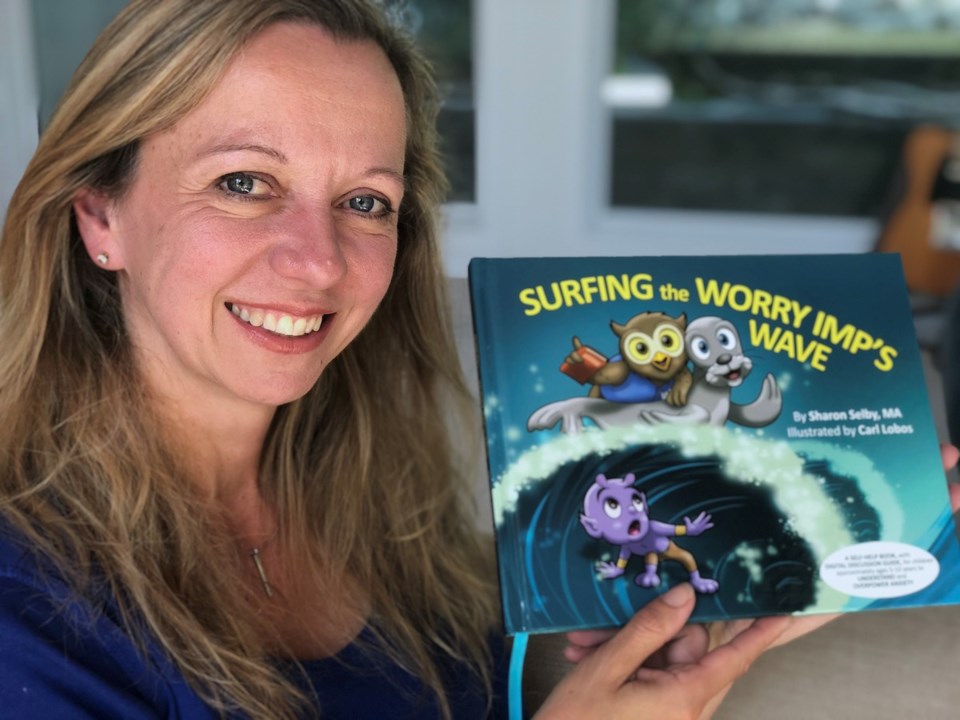Sharon Selby is a registered clinical psychologist on the North Shore. She specializes in children’s anxiety and is the author of Surfing the Worry Imp’s Wave, as well as its digital companion about reducing coronavirus anxiety and 8 Common Mistakes to Avoid When Your Child is Anxious. She is a nominee for the 2020 YWCA Women of Distinction Awards in the health and wellness category.
We asked her to share some of the ways parents can help their children deal with the anxiety that’s been triggered by the pandemic and fears of Covid-19. Her responses have been edited for length and clarity.
Talk and listen
"It's really important to ask them what they are thinking about all this. This gives us a starting point so we're not trying to guess how they're feeling. We can actually hear if anything has been distorted. Probably they are jumping to some conclusions, which increases their anxiety, or they're magnifying things to be worse than maybe they are."
Live in the now, not in the what-if
"Anxiety is worrying about what might happen in the future. Help them realize that worrying about what might happen doesn't actually help us.
"It’s not used very much these days but a helpful expression is 'Don't cross that bridge until you get to it.' Anxiety is crossing that bridge even though we haven't gotten to it yet. Let’s just stay in the present and use the five senses to help us do that. What can we see right now? What can we hear? Notice that everything is OK. Look at the people around us. Everyone is walking around fine. Even if they're wearing a mask, we can still see their eyes; they've got smiles on their faces. They’re not running around in a panic. People are going about their daily lives"
Throw away the crystal ball
"One of the worrying tricks is called crystal ball thinking. It pretends it can go in the future and tell you that you should be worried about all these things. But we can't predict the future. The gift is being in the present."
Give the worry responsibility to someone else
"The plan is for children to go back to school. [If you tell them that school might be cancelled], it creates that worst-case-scenario thinking that anxiety thrives on. Refer to an external body that is making these decisions, such as Dr. Bonnie Henry, B.C. public health officer. 'Dr. Henry's guiding us with this. She's an expert in it. For now, she's reopened schools; she said it's OK to go back to school but we need to follow precautions. If at any point Dr. Henry thinks it's good for people to stay home again for a while, she'll let us know.'”
Fake it 'til you make it
"Even if you're not feeling entirely sure how you're going to handle something, act as though you've got this because you've got to instill that sense of security. The world is this insecure place right now so we need to have home become that place of security, and the strong foundation for our kids.
"It’s up to parents to be really calm, even if they are feeling anxious inside. Often I refer their role as being captain of the ship. Tell them that as a family we'll figure this out. We're just going to go week by week. We might not be able to see cousins or grandparents right now but that's what video calls are for. Also it's a chance to make a card and send it in the mail, the old-fashioned way. We can still stay in touch; it's just going to look different."
Retrain those thought patterns
"Our thoughts create our feelings; it's not the actual situation that creates our feelings. Cognitive behaviour therapy helps them realize how their thoughts can be distorted. We don't use that word with kids; I call them mind tricks. In my book I use my little worry character to explain that this little voice is playing tricks on you. It is your job to get your power back because every time you listen to that little voice and you do as it says, then it gets stronger and stronger. Help them get their power back and prove that the Worry Imp is wrong."
When alarm bells ring, practise square breathing
"The amygdala is that part of the brain which gives us the fight, flight or freeze response to fear. Sometimes the amygdala gives off a false alarm. I compare it to a kitchen smoke alarm that goes off when we're cooking and there’s no real fire. Square breathing is like waving a tea towel under the alarm. You’re making it turn off."
[Count to four as you take a deep breath. Hold it for four. Exhale for four. Hold for four. Repeat.]
Surfing the Worry Imp’s Wave: A Digital Guide for Decreasing Coronavirus Anxiety is available for free on Sharon Selby’s website. You can download it here.
Martha Perkins is the North Shore News’ Indigenous and civic affairs reporter. This reporting beat is made possible by the Local Journalism Initiative.



